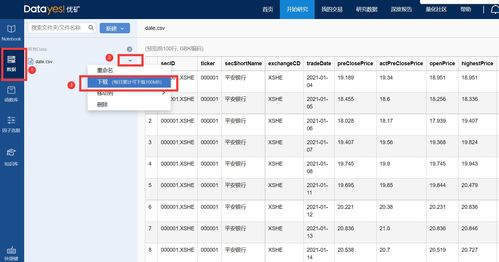股票买卖页面能单独移在桌面吗
Title: Understanding Stock Trading Interfaces
Investing in stocks involves navigating through various trading platforms and interfaces. Whether you're a beginner or an experienced trader, understanding how stock trading pages work is crucial for making informed investment decisions. Let's delve into the key components of a stock trading page and some guidance on using them effectively.
1. Overview:
Stock trading pages typically consist of several sections designed to provide comprehensive information and facilitate trading activities. These sections may include:
2. Market Data:
Stock Quotes:
This section displays realtime or delayed quotes for various stocks. It shows the current price, change in price, trading volume, and other relevant metrics.
Charts:
Charts visually represent the price movement of a stock over time. Common types of charts include line charts, candlestick charts, and bar charts. Analyzing these charts can help investors identify trends and patterns.
Market Indices:
Information about major market indices such as the S&P 500, Dow Jones Industrial Average, and NASDAQ Composite is often provided. These indices give an overview of the overall market performance.3. Trading Tools:
Order Entry:
This feature allows investors to place buy or sell orders for stocks. It includes options to specify the quantity, order type (market order, limit order, etc.), and duration (day order, good 'til canceled, etc.) of the order.
Watchlist:
Investors can create watchlists to monitor the performance of specific stocks. Watchlists typically display key information such as stock prices, changes, and volume.
Portfolio Summary:
This section provides an overview of the investor's portfolio, including the value of holdings, overall performance, and allocation across different assets.4. Research and Analysis:
News and Insights:
Stock trading pages often feature news articles, analysis, and market commentary from financial experts. Staying updated with relevant news can help investors make informed decisions.
Fundamental Data:
Information about a company's fundamentals, such as earnings reports, financial statements, and analyst recommendations, can assist investors in evaluating the stock's value.
Technical Analysis Tools:
Some trading platforms offer technical analysis tools such as moving averages, RSI (Relative Strength Index), and MACD (Moving Average Convergence Divergence) to help investors analyze price trends and identify potential entry or exit points.5. Account Management:
Account Information:
Investors can access details about their brokerage account, including balances, transaction history, and account settings.
Deposit and Withdrawal:
Trading interfaces typically provide options for depositing funds into the brokerage account or withdrawing funds from it.
Tax Reporting:
Some platforms offer tax reporting tools to assist investors in managing their tax obligations related to investment income and capital gains.Guidance for Users:
Understand the Interface:
Take time to familiarize yourself with the layout and functionality of the trading page. Explore each section and understand how to interpret the information provided.
Stay Informed:
Regularly check market news and updates to stay informed about developments that may impact your investments.
Conduct Research:
Utilize research tools and analysis features available on the trading platform to evaluate investment opportunities thoroughly.
Practice Caution:
Be cautious when placing orders, especially in volatile markets. Consider using limit orders to specify the price at which you are willing to buy or sell a stock.
Monitor Your Portfolio:
Regularly review your portfolio and adjust your investment strategy as needed based on changing market conditions and your financial goals.Understanding how to navigate and utilize stock trading pages effectively is essential for successful investing. By leveraging the information and tools available on these platforms, investors can make informed decisions and manage their portfolios more effectively.
[Disclaimer: Investing in stocks carries inherent risks, and individuals should conduct their own research or consult with a financial advisor before making investment decisions.]
股市动态
MORE>-

火灾赔偿标准一览表
火灾保险赔偿标准火灾保险是一种重要的财产保险形式,旨在保护被保险人免...
-

深度解析航天电子的投资价值与未来潜力
对于许多投资者来说,选择正确的股票进行投资不仅是艺术,更是科学,在众...
-

深度解析豫光金铅,行业龙头,黄金矿业的投资潜力与风险探析
一、公司概述:豫光金铅,全称为河南豫光金铅股份有限公司,作为国内领先...
-

深度解析与投资攻略,三丰智能——探索智能化转型的科技巨头
公司简介三丰智能,一家专注于智能制造领域的高新技术企业,以其卓越的自...
-

深度解析东方国信,一只潜力与挑战并存的股市明珠
在风云变幻的股票市场中,东方国信无疑是一颗熠熠生辉的明星,以其稳健的...
- 搜索
- 最近发表
-
- 深入了解股票分析系统的功能模块,投资者的智能助手
- 探索688077,解锁科技新纪元的钥匙
- 综合保险查询,全面了解您的保障
- 东莞疫情新动态,新增1例无症状感染者,市民需保持警惕并加强防护
- 股票在线诊断软件,投资者的智能助手
- 探索铁路股,投资的铁轨与机遇
- 宁波联合(600051)深入解析与投资价值评估
- 同花顺个股分析网,投资者的智能助手
- 深入了解600705,最新动态与投资洞察
- 深入解析同花顺,如何找到并利用个股分析功能
- 辽宁疫情新动态,昨日新增7例本土无症状感染者深度解析
- 2021年端午节,传统与现代的交融
- 探索太平洋A股,投资海洋中的宝藏
- 药石转债,投资新机遇与风险分析
- 股票分析师的工作内容有哪些
- 大晟文化股票诊断,深入分析与投资策略
- 数字密码,解析688209背后的神秘故事
- 辽宁职校封闭管理下的病毒破防,疫情应对与心理调适指南
- 红太阳(000525)探索中国农药行业的领军企业
- 深入解析,股票诊断分析的艺术与科学
- 标签列表
-
- 兴业银行理财月月得益赎回规定 (4)
- 英伟达市值涨了多少倍 (4)
- 博时月月享基金安全吗 (4)
- 港股恒指遭遇重挫跌46% (5)
- 港股恒指怎么交易需要多少资金 (4)
- 主力资金净流入排行榜 (5)
- 股票财经方面有哪些 (13)
- 财经股票基础知识 (6)
- 最好的股票财经网 (8)
- 财经与股票 (10)
- 财经讲股票的栏目 (8)
- 谈论股票的财经频道 (7)
- 财经a股 (5)
- 财经类股票 (13)
- 股票初学者相关财经知识 (6)
- 财经诊股 (5)
- 财经类股票网站 (5)
- 财经股票入门基础知识 (4)
- 股票财经推荐 (5)
- 港股午评:恒指跌3.87%失守24000点 (4)
- 永赢基金行情 (4)
- 股票财经 (6)
- 财经股票怎么玩赚钱 (5)
- 财经股市大家谈 (5)
- 港股恒指今日收盘走势 (4)
